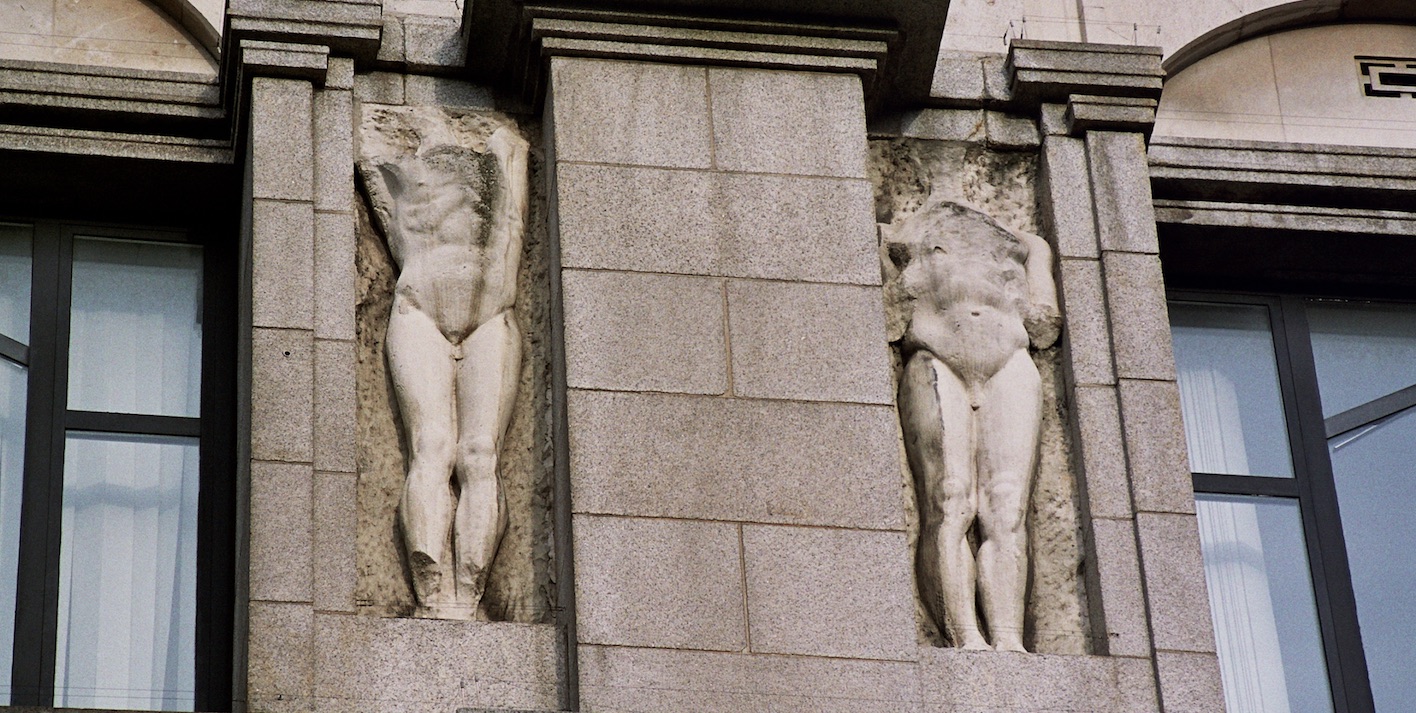It’s not unusual for buildings to be deemed a danger to public safety. Dodgy slates, crumbling brickwork or loose panes of glass often result in blocked pavements, stripy warning tape and cheek sucking workmen. However, In the history of remedial works there must be few examples of an erection being declared unsafe due to the threat of falling penises.
In the late 1930s number 429 Strand, a building dogged by controversy ever since its completion, was irrevocably altered, some would say vandalised, in the name of health and safety.

A stroll along the Strand today often involves a head down battle against the tide of humanity. The street contains some classic features, Charing Cross Station, Somerset House, the Savoy hotel, but as a car choked thoroughfare, it’s not the best place in the capital to admire the view. In 1908 the scene was very different. Locals gathered in large crowds at what is now number 429, to view the recently completed headquarters of the British Medical Foundation. The focus of their gaze was upwards, to the series eighteen seven-foot-high nude sculptures entitled the ‘Ages of Man’ which adorned the outside of the building. The nakedness of the figures enraged conservative writers of the time and the Evening Standard spearheaded a campaign against art works. They were supported in this moral crusade by the National Vigilance Society. One member, Father Bernhard Vaughn, raged –
As a Christian in a Christian City, I claim the right to say that I object most emphatically to such indecent statuary being thrust upon my view.
The Evening Standard editorial suggested that the statues were the sort that –
…no careful father would wish his daughter, or no discriminating young man, his fiancée, to see
The vehemence of the outrage and indignation generated wider public interest. Meaning hoards of Londoners flocked to the Strand eager to be offended.
The furore epitomised the rapidly changing world of the early twentieth century. The prudishness of the Victorian age was succumbing to more avant-garde forms of expression and artists such as Jacob Epstein, the creator of the Ages of Man, were beginning to challenge societal taboos in very public ways.
Born into to a Jewish family of Polish refugees on the lower East Side of New York, Epstein was a pioneer of modern sculpture. His bohemian style rejected ornate art in favour of harsh realism and his work often focused on issues of sexuality. This free-spirited approach jarred with conservative views of decency and Epstein’s work was often branded as obscene. The controversies which followed dogged his career, but, although hindered by the criticism, Epstein always confronted his detractors head on.
In 1908 the campaign to remove the offending sculptures was matched by the appearance of a group of equally vocal supporters. Leading artists praised Epstein’s innovative work and the British Medical Association decided to stand by the artist and the statues remained.
In 1923 the building was taken over by the Rhodesian government to house their High Commission. By the 1930s the new owners claimed the sculptures were in a dangerous state of repair and needed to be removed. Some have suggested that the Rhodesians were motivated by the same objections as the Edwardian moralists. It may also have been that Epstein’s Jewish background counted against the art works.
In mid-August, 1937, work got underway to remove the statues. In a twist worthy of a ‘Carry on’ script writer, the job was supervised by Sir William Reid Dick, President of the Royal Society of British Sculptors. It is hard to believe that the sculptures were beyond repair, but the danger of flying phalluses won the argument and in the following weeks the offending protuberances were hacked away forever.
Today the shattered remains of Epstein’s work are still visible on the outside of what is now Zimbabwe House. For a modern audience it is hard to comprehend the level of scandal and outrage they once generated. Had the statues survived intact they would barely raise an eyebrow. In their vandalised state they are powerful reminder that art has the ability to enrage and drive change. – health and safety permitting.
The National Vigilance Association was established in August 1885 ‘for the enforcement and improvement of the laws for the repression of criminal vice and public immorality’.
The art of Joepsh Epstien is displayed all over the world. It’s boldness and originality greatly influenced a younger generation of sculptors such as Henry Moore and Barbra Hepworth.
Further information
429 Strand
https://en.wikipedia.org/wiki/Embassy_of_Zimbabwe,_London
Joseph Epstein
http://en.wikipedia.org/wiki/Jacob_Epstein_%28sculptor%29
Location
429 Strand is located a short walk from Charing Cross railway station in central London
